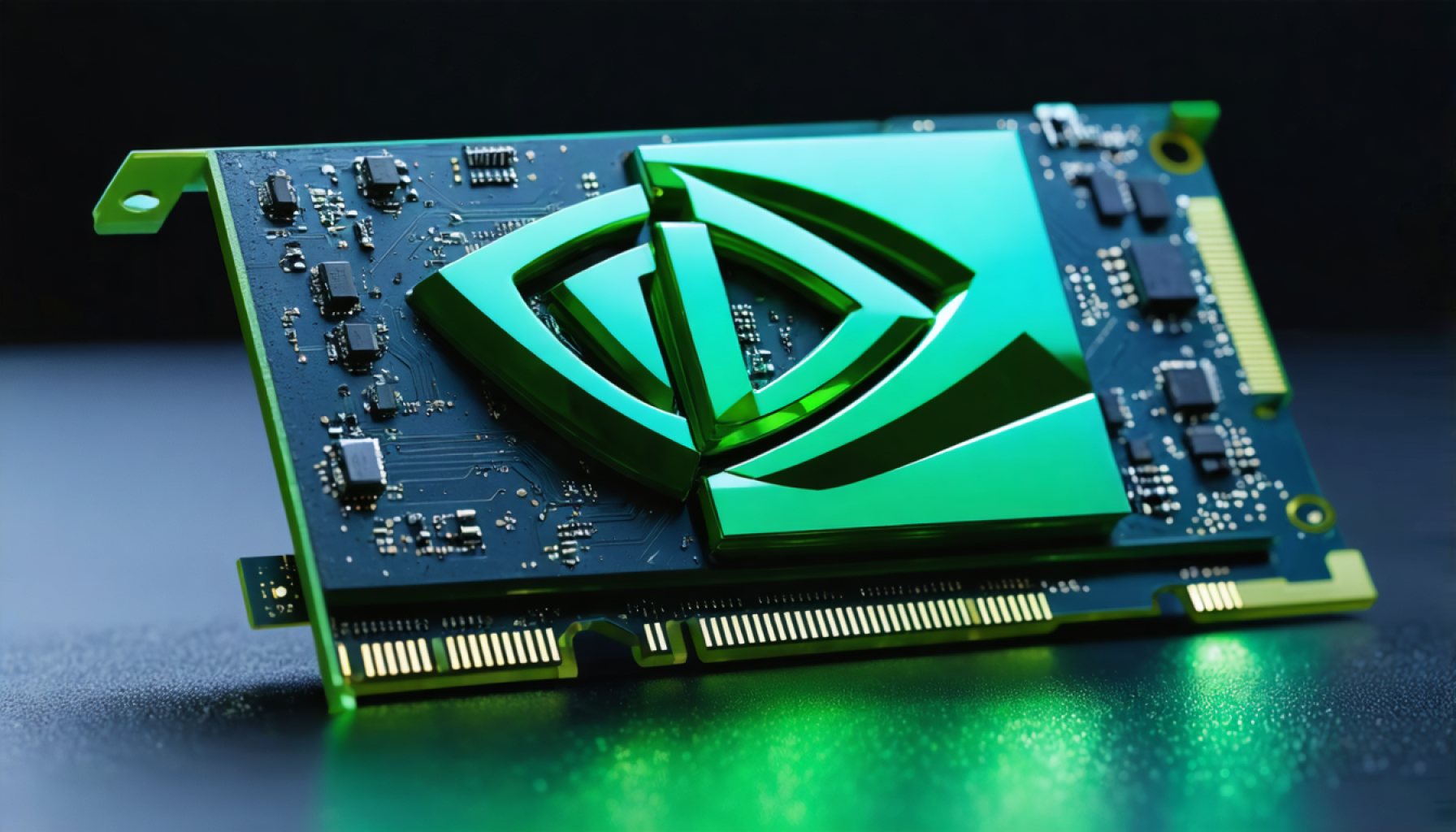- Nvidia’s GPU Technology Conference 2025 in San Jose highlights its AI-driven strategy despite economic uncertainties.
- CEO Jensen Huang predicts strong AI demand, urging companies to embrace AI to avoid becoming obsolete.
- Nvidia’s AI products are crucial, comprising 87% of its recent revenue, underscoring AI’s importance in modern business.
- The tech landscape is divided into AI “haves” and “have-nots,” with leaders like Nvidia poised to advance significantly.
- With a robust $60.9 billion cash flow, Nvidia plans to invest in AI growth, maintaining financial stability.
- While competitors like Intel struggle financially, Nvidia leverages its strengths to fortify its market position.
- Nvidia’s foresight serves as a blueprint for industries transitioning from traditional to transformative technology.
- The message is clear: adapt to AI innovations or risk obsolescence.
In a packed hall in San Jose, California, the pulsating heart of technology, Nvidia once again showcased its prowess at the cutting-edge GPU Technology Conference (GTC) 2025. While the banners and booths buzzed with innovation, it was CEO Jensen Huang who captivated the audience with a declaration that cut through the clamor of cash flow charts and market predictions.
Amidst an era where economic storm clouds loom large, Huang addressed a fundamental concern: Can his empire withstand an impending recession, and more intriguingly, can AI flourish despite—or perhaps because of—economic downturns? With conviction, he painted a future where AI demand not only survives but thrives, urging every CEO to pivot towards this electric frontier to prevent sliding into obsolescence.
Visualize corporate titans shifting their sails, navigating the tumultuous waters toward AI. Fueled by the inexorable tide of innovation, Nvidia’s AI-enabling products have become indispensable lifeboats, capturing an impressive 87% of the company’s recent revenue. Huang’s reasoning is as clear as it is compelling; companies like Apple couldn’t risk turning away from AI advancements, lest they find themselves eclipsed by competitors harnessing the power of AI more effectively.
Indeed, the world is increasingly dichotomized into AI “haves” and “have-nots,” with the former poised to leap ahead in an increasingly competitive landscape. As Nvidia fortifies its position, bolstered by a robust balance sheet reflecting nearly $60.9 billion in free cash flow last year, its strategy emerges: leverage financial strength to invest in AI-driven growth opportunities while maintaining fiscal prudence.
In stark contrast, other semiconductor giants wrestle with their financial reality. Advanced Micro Devices (AMD) holds a relatively stable position, yet faces formidable competitors like Intel, struggling under a mountain of debt and negative free cash flow. Yet Nvidia, with its equilibrium of cash reserves and long-term debt, poised like a vigilant sentinel, sees potential in stormy economic seas as a chance to reinforce its technological hegemony.
Beyond the numbers, Nvidia’s success reverberates as a lesson in resilience and foresight. Huang’s vision extends past recession fears, encouraging businesses to seize growth by aligning with AI advancements. For industries grappling with the shift from traditional to transformative technology, Nvidia presents an appealing blueprint for progress. As AI continues to evolve, the clarion call is clear: adapt and soar, or face the gradual decline into irrelevance.
Nvidia’s AI Revolution: Navigating Economic Turmoil and Empowering the Future
AI’s Role in Economic Resilience: Insights from Nvidia’s GTC 2025
Nvidia recently held its GPU Technology Conference (GTC) 2025 in San Jose, California, a vibrant testament to the company’s leadership in AI and the semiconductor domain. With CEO Jensen Huang at the helm, the event emphasized the transformative role of AI amid potential economic challenges.
Market Insights and Trends
1. AI Demand Surge: Despite economic uncertainties, the demand for AI technologies is projected to rise. As companies increasingly depend on AI to optimize operations and innovate, Nvidia expects sustained growth in its AI sector. According to a report by Grand View Research, the AI market size is anticipated to expand at a CAGR of 37.3% from 2023 to 2030.
2. Dominance in AI Markets: With Nvidia capturing approximately 87% of its revenue from AI-enabling products, the company positions itself as a frontrunner in AI hardware and software solutions. This aligns with the global shift towards AI integration in industries beyond technology, including healthcare, automotive, and finance.
3. Strategic Financial Management: Nvidia’s robust financial health, evidenced by nearly $60.9 billion in free cash flow, empowers it to explore new growth avenues while maintaining fiscal stability. This financial strategy ensures Nvidia can weather economic downturns and invest in pioneering AI projects.
Real-World Use Cases
– Healthcare: AI-driven Nvidia technologies enhance diagnostic capabilities and personalized medicine approaches, reducing errors and improving patient outcomes.
– Automotive: Leveraging Nvidia’s AI, automotive industries are innovating with autonomous driving systems, enhancing safety, and optimizing vehicle performance.
Pros & Cons Overview
Pros
– Innovation Leadership: Nvidia remains at the forefront of AI advancements, fostering innovation across sectors.
– Strong Financial Backbone: Sustained cash flow and prudent investment strategies bolster resilience against economic downturns.
Cons
– Competitor Challenges: Companies like AMD and Intel continue to intensify competition, potentially impacting market share.
– Dependence on AI Market: Economic shifts affecting AI demand could impact Nvidia’s revenue concentration in this domain.
Actionable Recommendations
1. Embrace AI Integration: As Nvidia suggests, industries should fast-track AI adoption to stay competitive. Initiating AI-driven transformations now can safeguard against obsolescence.
2. Stay Financially Agile: Learning from Nvidia’s financial agility, organizations should maintain prudent fiscal management to weather economic setbacks.
3. Explore Strategic Partnerships: Collaborating with AI leaders like Nvidia can provide companies with vital resources and expertise to navigate technological advancements.
For further exploration of Nvidia’s innovations and market strategies, visit Nvidia’s official website.
By seizing AI opportunities and preparing for economic volatility, Nvidia exemplifies strategic foresight, inviting industries to participate in a collaborative, high-tech future.
